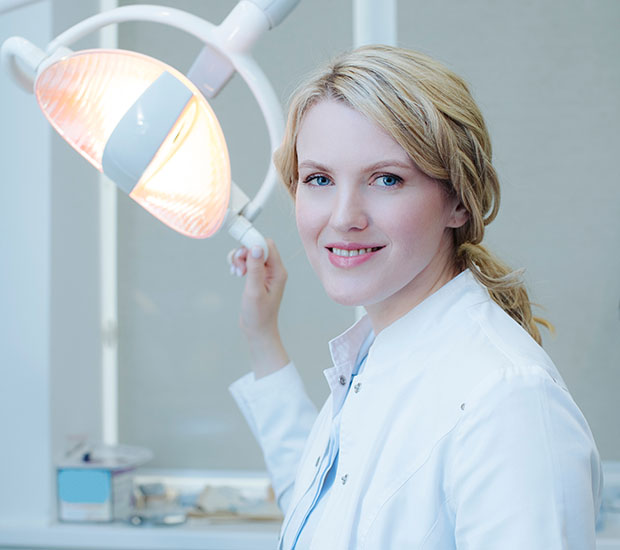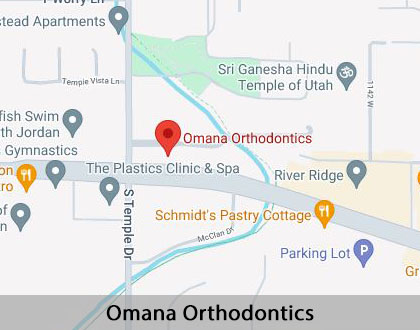Orthodontic PracticeSouth Jordan, UT
An orthodontic practice offers treatment for abnormalities of the teeth and jaw. Having correctly aligned teeth improves chewing, speech, and many aspects of oral health. From expanders to braces and aligners, an orthodontic practice focuses on fixing tooth misalignment and other issues.
As an orthodontic practice, Omana Orthodontics serves South Jordan and the surrounding area. We explain what you need and why through each step. We provide braces and much more. Call us at 801-618-2800 today.
An Overview of Orthodontics
Some dentists provide braces or other orthodontic services. However, they are not orthodontists because they have not had the appropriate training. It is important to visit a qualified orthodontic practice so that the patient does not receive cosmetic-only treatment that overlooks structural issues with the teeth and jaw.
An orthodontic practice evaluates the size, shape, and position of the patient’s teeth and jaw for current issues as well as potential problems. While a good orthodontic practice will help patients achieve a beautiful smile, it will also help them address structural issues that may lead to more serious problems.
“An orthodontic practice evaluates the size, shape, and position of the patient’s teeth and jaw for current issues as well as potential problems.”
What an Orthodontic Practice Does
An orthodontic practice safeguards the proper functioning of teeth for better oral health and functioning. Braces and other orthodontic appliances reposition misaligned jaws, facial bones, and the surrounding soft tissue in addition to teeth. As a result, orthodontia can improve dental hygiene, preserve tooth enamel, and allow patients to chew and speak more effectively.
To open up an orthodontic practice, practitioners must earn a bachelor’s degree (BA or BS), go to dental school for their DDS or DMD, and then complete a two-to-three-year residency for a certificate of orthodontics. Some orthodontists also acquire master's degrees.
“Orthodontia can improve dental hygiene, preserve tooth enamel, and allow patients to chew and speak more effectively.”
When Orthodontics is Necessary
Although patients can benefit from orthodontic treatment at any age, it is ideal for younger people. Braces and other therapies can direct the jaw to grow in proper alignment, preventing larger problems such as temporomandibular joint disorder (TMJD).
Any of the following issues may indicate the need for an orthodontic practice:
- Biting the cheek or roof of the mouth
- Crowded, misplaced, or blocked-out teeth
- Difficulty biting/chewing
- Early or late loss of baby teeth
- Facial imbalance/asymmetry
- Inability to close lips comfortably
- Jaws that shift, make sounds, are recessed or protrude
- Mouth breathing
- Speech difficulty
- Sucking the thumb/fingers
- Teeth that meet abnormally do not meet or protrude
- Teeth grinding/clenching
“Braces and other therapies can direct the jaw to grow in proper alignment, preventing larger problems such as temporomandibular joint disorder (TMJD).”
Check out what others are saying about our dental services on Yelp: Orthodontic Practice in South Jordan, UT
What to Expect at an Orthodontist Practice
One’s first trip to an orthodontic practice will feel familiar. The waiting room may be similar to a dental office. When the patient is called back, they will sit in a dentist's style chair for their examination.
An orthodontic assistant or technician will take pictures or X-rays of the jaw and teeth so the orthodontist can see their position. The treatment team may have the patient bite into a tray of gooey material to make an impression showing the size and shape of the teeth. The orthodontist will examine the mouth, telling the patient to bite down or open wide. They will ask about any issues the patient has with swallowing, chewing, and jaw popping or clicking.
“An orthodontic assistant or technician will take pictures or X-rays of the jaw and teeth so the orthodontist can see their position.”
Questions Answered on This Page
Q. When is orthodontics necessary?
Q. What is an orthodontic practice like?
Q. How do you choose an orthodontic practice?
People Also Ask
Q. What is the difference between orthodontics and general dentistry?
Choosing an Orthodontic Practice
When it is time for an orthodontic practice, choose carefully. While the patient could randomly choose from Google or the phone book, a more informative resource is the patient’s insurance company or a review website. Word-of-mouth is another resource for quality orthodontic care in the local area.
Consider speaking to more than one orthodontic practice before making a choice. Some questions to ask include:
- Do they accept your dental insurance?
- Do they offer free consultations?
- Do they offer low or no-interest payment plans?
- Does the team stay up-to-date through continuing education?
- How long have they been practicing?
- How many patients have they treated?
- If more than one family member goes to this practice, is there a discount?
“When it is time to find an orthodontic practice, choose carefully.”
Frequently Asked Questions
Q. Why do I need an orthodontic practice if my dentist does braces?
A. Orthodontic treatment is about more than straightening teeth. A dentist may produce cosmetically pleasing results. However, they do not have the additional years of in-depth training to diagnose and treat misaligned jaw, teeth, and facial bones.
Q. When should I seek out an orthodontic practice?
A. It is a good idea to visit an orthodontic practice when you are young. Proper positioning of the jaw and teeth can direct growth. However, any time you notice issues with the teeth or jaw—such as teeth not meeting, speech difficulties, tooth grinding, and so on—you should visit an orthodontic practice.
Q. What resources should I use to find the right orthodontic practice?
A. Consult your insurance provider, friends, neighbors, and review websites when looking for an orthodontic practice. The internet is an excellent resource because you can read reviews of local orthodontic practices from their patients. Also, your dentist may have some good recommendations.
Q. What will it be like to visit an orthodontic practice?
A. At first, visiting an orthodontic practice will be much like visiting a dentist. The office and the diagnostic tests, like x-rays and molds, will be the same. Once you have a diagnosis, the orthodontist can explain what to expect from treatment.
Q. How much does orthodontic treatment cost?
A. The cost of orthodontic treatment varies widely from place to place and patient to patient. Luckily, many insurance plans cover at least a portion of the cost. Be sure to check with your insurance provider for details on coverage.
Quality Orthodontic Services Can Transform Smiles
By visiting us as soon as possible, our team can help get you the professional treatment you need.
Definition of Orthodontic Terminology
Learn More About an Orthodontic Practice
Seeking an orthodontic practice at any age promotes good oral health. Not only can orthodontic services improve the look and function of teeth, but also they improve a patient’s confidence.
If you are looking for braces or other services, let Omana Orthodontics in South Jordan help. Call us at 801-618-2800 to find out more.
Helpful Related Links
- American Dental Association (ADA). Glossary of Dental Terms. 2021
About our business and website security
- Omana Orthodontics was established in 1998.
- We accept the following payment methods: American Express, Cash, Check, Discover, MasterCard, and Visa
- We serve patients from the following counties: Salt Lake County and Utah County
- We serve patients from the following cities: South Jordan, West Jordan, Riverton, Herriman, Sandy, Midvale, Cottonwood Heights, Bluffdale, Saratoga Springs and Lehi
- National Provider Identifier Database (1164527784). View NPI Registry Information
- Healthgrades. View Background Information and Reviews
- Norton Safe Web. View Details
- Trend Micro Site Safety Center. View Details
Back to top of Orthodontic Practice







